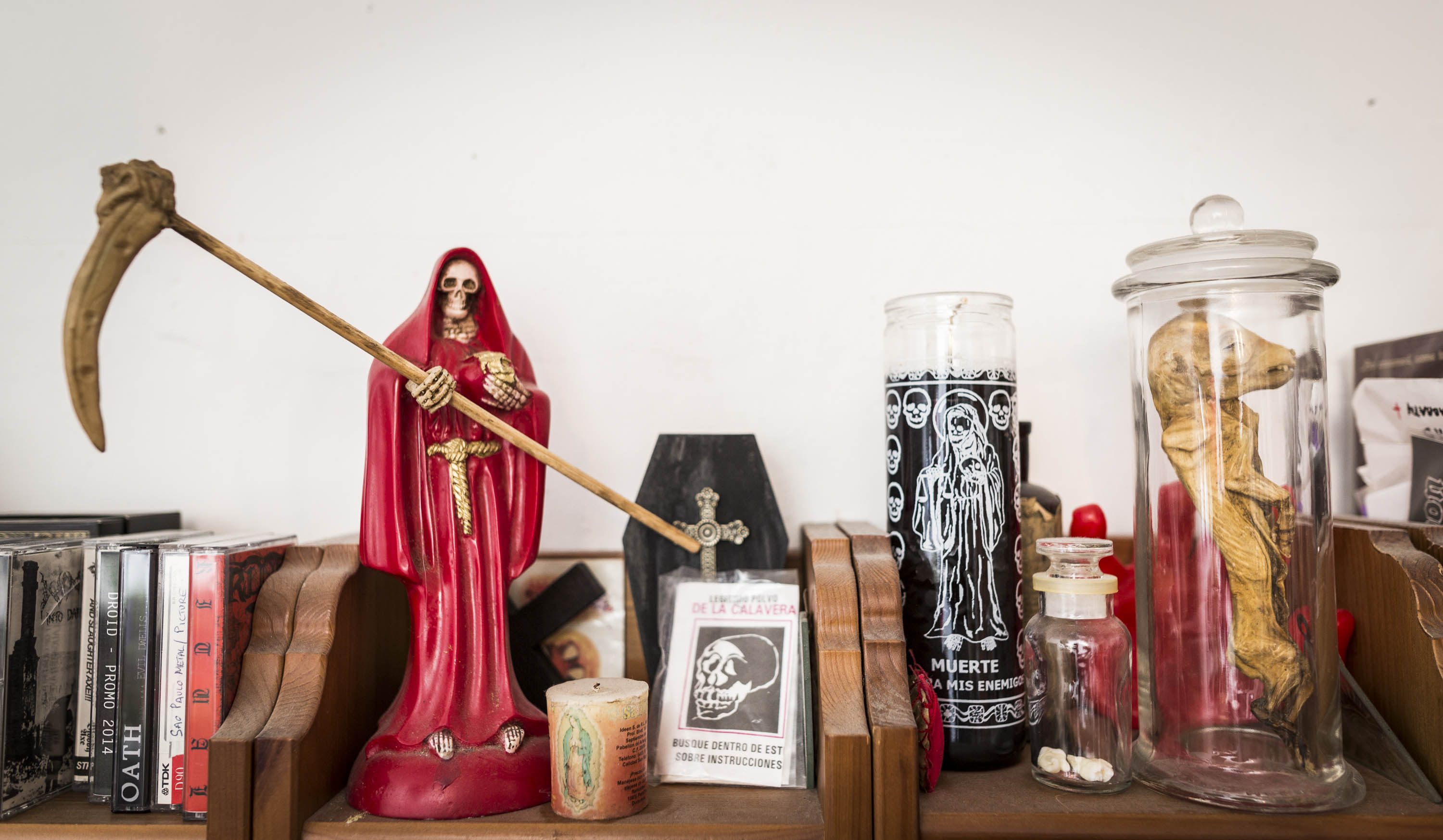A Beginner’s Guide To Doom And Stoner Rock
In their illustrated Beginner's Guide To Doom And Stoner Rock, Lelo Jimmy Batista and illustrator Naga Wika map the connections in a tangled web of musical ties. The family tree was originally published earlier this year in the Villette Sonique edition of the Academy’s Daily Note newspaper. Scroll down for the English translations of each entry.
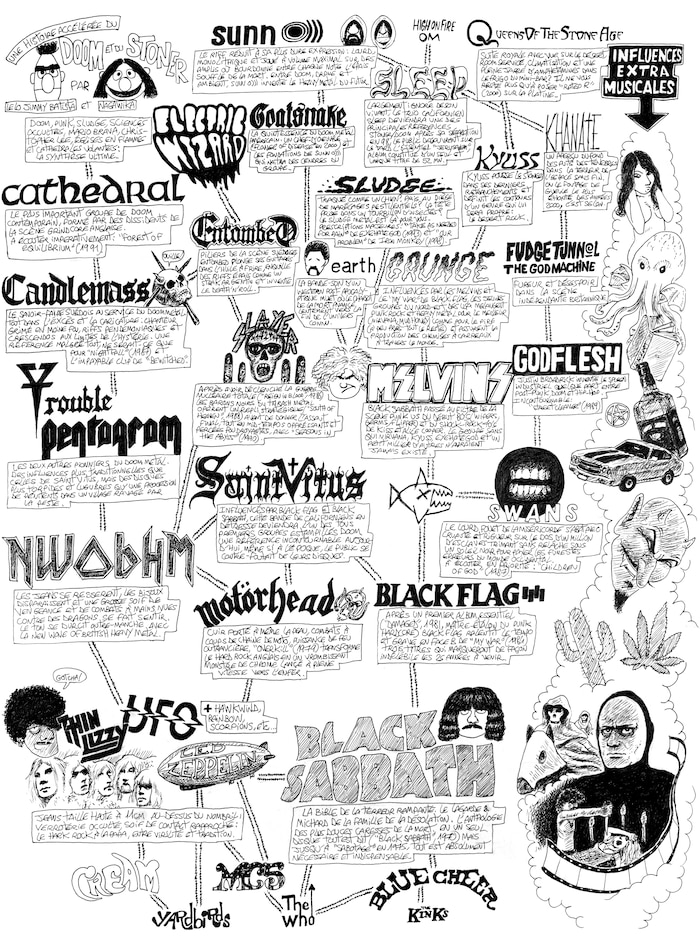
Doom, sludge, punk, the occult, Mario Brava, Christopher Lee, burning churches and flying cathedrals: this is the ultimate introduction, in more or less chronological order.
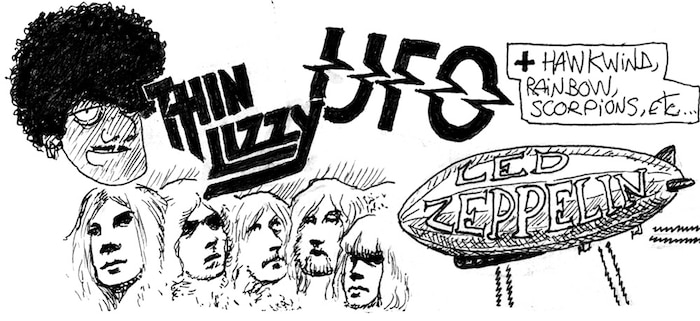
Long jeans worn approximately 11cm above the belly button, occult jewellery and a thirst for close contact: hard rock for dads, lying somewhere between virility and tradition.
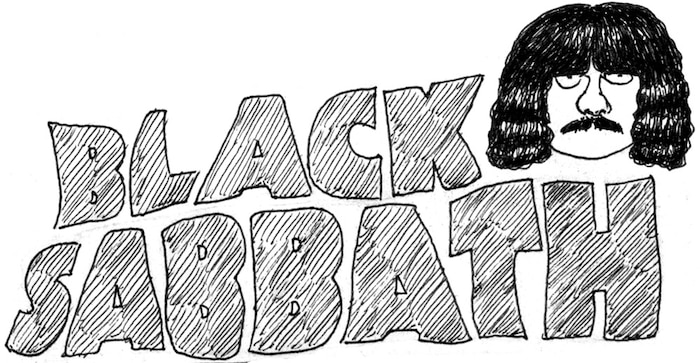
The Bible of rampant terror. The revision guide for the family of desolation. The anthology of the softest caresses of death. On a single disk, everything is covered (Black Sabbath, 1970) and right up until Sabotage (1975), everything is necessary and indispensible.

Skin tight leather, fights with motor chains, the power of an extreme fire, Overkill (1979) transformed hard rock into a roaring metal monster launched at full speed towards hell. Which brings us approximately to...

The New Wave Of British Heavy Metal. The jeans stay, the jewellery disappears and a major thirst for vengeance and bare knuckle fighting with dragons can be felt. The tone hardens in the UK with this new crop of metal.

Following their first essential album (the blueprint of hardcore punk Damaged, 1981), Black Flag slowed down the tempo, and on the b-side of My War engraved three tracks which would indelibly mark the 25 years to come.

The stinging whip of mercy strikes against the cruelty and oppression suffered by a thousand slaves working relentlessly under a black sun to pay off the fateful debts of the western world. First thing to hear: Children Of God (1987).

After having started total nuclear war (Reign In Blood, 1986), the black barons of thrash metal then opted for a strategic reply (South Of Heaven, 1988) before unleashing their final assault of oppressive mid-tempos and furious breakthroughs on Seasons In The Abyss (1990).

Influenced by Black Flag and Black Sabbath, this band of Californians in distress would become one of the first groups to be labelled ‘doom’. An essential reference point today, even if at the time, no-one would give the album a second glance.
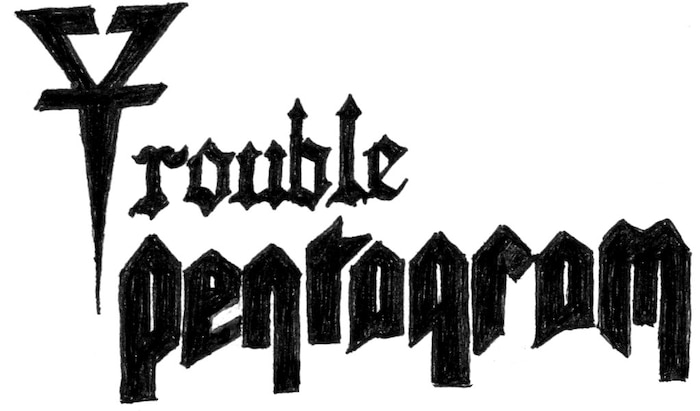
The two other pioneers of Death Metal. They have more traditional influences than those of Saint Vitus, although their albums are more indolent and gloomy than a penitent procession through a village ravaged by plague.

Black Sabbath passed through a filter of US punk from the early 80s (Wipers, Germs, Flipper) and the 70s shock-rock of Kiss and Alice Cooper. This is the group without whom Nirvana, Kyuss, Eyehategod and probably thousands of others would never have existed.

The Swedish leaders when it comes to doom metal. Everything in excess and caricature: a singer dressed up like a mad monk, demonic riffs and crescendos that take you to the limits of hysteria. Main reference points would have to be Nightfall (1987) and the priceless video for “Bewitched”.

Justin Broadrick invents an industrial spleen somewhere between post-punk, doom and gip hop. Unmissable: Street Cleaner (1989).

Pillars of the Swedish scene, Entombed sound as though they plunge their guitars into boiling hot oil and wolf down riffs like they’re Argentinian steaks, inventing the genre ‘death ’n’ roll’. Somewhere around this era, some new strains of rock starting appearing...

Influenced by The Melvins and Black Flag’s My War, the young groups of northwest America combined punk rock and heavy metal for the better (Mudhoney, Nirvana) and for the worst (pretty much everyone else), as well as boosting the production of plaid shirts all over the world.
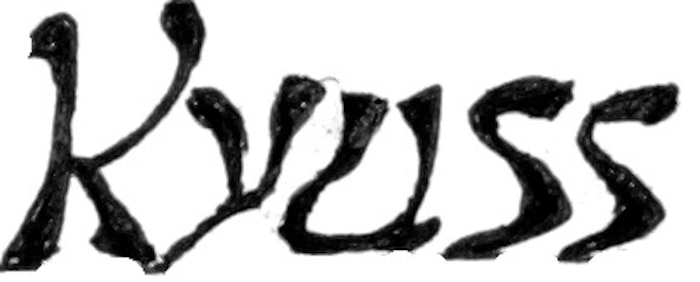
Kyuss grabbed hold of stoner rock in its closing days to define the contours of a genre that would become a movement all of its own: desert rock.
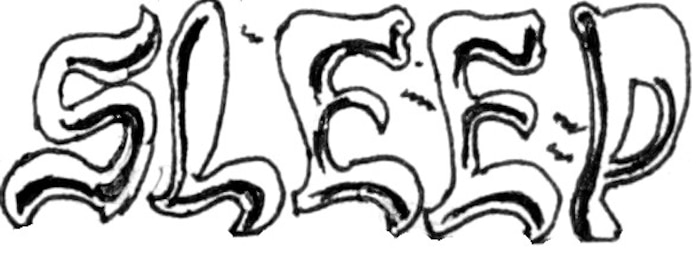
Largely ignored during their music-making lifetime, Californian trio Sleep would become one of the main references for doom/stoner rock following the group’s separation in 1998. Listeners were late to come around to the essential Jerusalem, an album constructed of a single, unique track lasting 52 minutes.
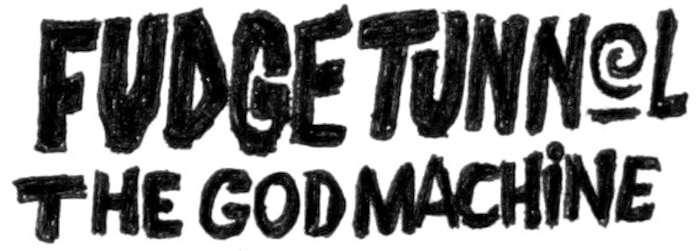
Rage and despair in the independent British scene.

The most important group of the contemporary doom scene, formed by dissidents of the British grindcore scene. Essential listening: Forest Of Equilibrium (1991).
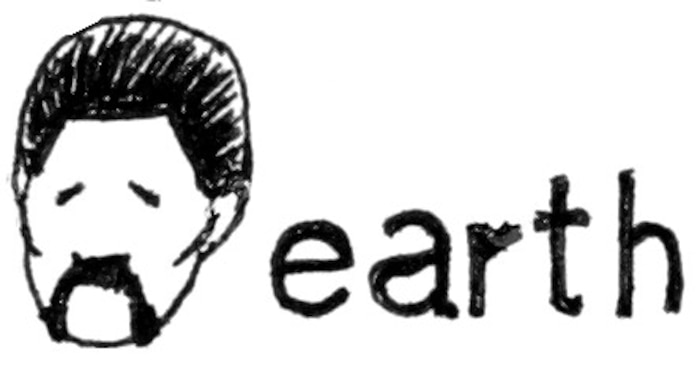
The soundtrack to a silent post-apocalyptic Western, where the chariot of death advances slowly towards the end of the known universe. It was during this period that the tempos starting slowing...

Hunted like a dog? Chased to the edges of pestilential swamps? Is your head surrounded by a tornado of insects? If this is the case, sludge metal is here for you. Recommended dosage: Take As Needed For Pain from Eyehategod (1993) and Our Problem by Iron Monkey (1998).

A penthouse with a view of the desert, room service, air conditioning and a full jar of amphetamines in the fridge of the mini bar? All that’s left for you to do it to blast Rated R (2000) through the speakers.

Quintessential American doom metal. Goatsnake created a masterpiece in Flowers Of Disease (2000), and rising from the ashes following their split were the foundations of SUNN O))).

Riffs reduced to their hardest sound: heavy, monolithic and played at maximum volume through amplifiers where the buzz between each note breathes the fiery breath of death. Between doom, drone and ambient, SUNN O))) invent the heavy metal of the future.
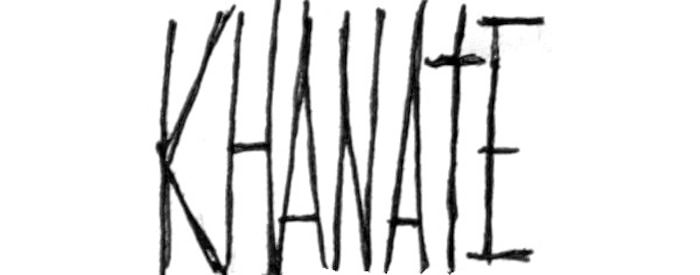
A glimpse at the bottom of a shaft of darkness, and the terror of infinite space. Or perhaps just the most brazen pisstake of the 2000s?
Translations by Francine Gorman.
